
MMSTL - 'Softroll' Distributorship
One of the benefits to the bowlers that came from communications through the MMSTL website was that the door was opened for product imports into the United States. Emails from Canada's John Honeyford led to a further friendship and meeting with Canadians Greg Peteraitis and Mike Wood. Greg was in close touch with the Softroll bowling ball manufacturer, Steve Phipps, who was just starting out in the business during that time of the early 2000s. Peteraitis told me about these new balls with an exceptional grip to them. He was very much into the manufacturing process, and had a lot of knowledge about the ball composition, durometer measurements, and other details. Peteraitis and Wood made a couple of trips down to the states, and I met up with them at AMF College Park. I tried the Softrolls, and they definitely had a different feel to them, like a softer rubber, evidenced by the way they rolled and 'broke' (hooked/curved) on the lane. Greg asked if I would be interested in being the U.S. Distributor for the Softrolls -- a request in which I was honored to accept. (I presumed that Phipps Bowling compensated Greg with a nominal profit on each set that he could sell, which was perfectly acceptable to me).
GETTING THE BALLS APPROVED
I informed the National Duckpin Bowling Congress that a new line of bowling balls was coming from Phipps Bowling in Canada, and in reply, they requested that I bring them one of the balls to be examined. I subsequently brought one of the first 2 balls that I purchased from Greg to the national office. Afterward, I hadn't heard back from the Congress for about a week or two, so I re-visited the main office at AMF Southwest. As it turned out, the ball I gave them, ended up getting cut in half, which was a little unexpected, but not too surprising. However, nothing was found to be any different than a normal bowling ball -- just 'solid' all the way through. So, the Softrolls were, from that point on, officially approved by the NDBC.
GETTING THE WORD OUT
In conjunction with posting news of the new balls on the MMSTL web page, the weekly booklet was a natural vehicle for advertising this exciting new product, and it didn't take long for the word to spread throughout the bowling communities. Travel Leaguers, Buster Dodson and Billy Kennedy, Jr, were among the first to roll with the balls in league play. Amazingly, each of these bowlers, on the first time trying the balls, rolled '499' sets. The Softrolls got an instant reputation at that point.
- First announcement of the Softroll line, as shown on Page 16 of the weekly booklet (December 13, 2002)
- A later update on the Softroll line, as shown on Page 16 of the weekly booklet
- League sponsors page denoting MSTL Distribution for Canadian Softrolls, as shown on Page 18 of the weekly booklet
IRONING OUT THE DETAILS
One of the areas that needed improvement in the early variations of the Softrolls was that the balls would sometimes have a tough time making it up the ball rack, especially on the left lane of a pair of lanes. Proprietor Ralph Curry of White Oak Lanes explained that the right lane of a pair of lanes did enable more forward momentum when a ball descended onto the ball return, which is why the right lane never had an issue. This shortcoming of the Softroll ball was reported back to the manufacturer, and after the 3rd generation/release of Softrolls, the issue was greatly improved.
FOLLOWING THROUGH
The Softroll Distributorship through the MMSTL was never intended to be a money-making venture, but rather just there to provide a service to bowlers in and outside of the local area. The balls were basically sold at 'cost' for $110.00 a set ($90.00 for the balls, $20.00 for shipping). The league members and local bowlers realized this and were always very respectful on purchasing the product. There were only a couple of occasions that were minorly disappointing from a "distributing" standpoint, and both involved dealing with bowlers outside the local area, shortly after the Softrolls were officially approved by the Congress. In one encounter, a northern DPBA pro was anxious to get a set of balls, and agreed to send payment to me, if I would arrange to have the balls shipped directly to him from Canada. I knew the player and consented to this, especially since it wouldn't have made sense to pay for shipping to me and then back to him, but when I received his check, it was only for $108.00. It wasn't a big deal to lose $2.00, just one of those things a person might "shake his head at". The other case involved an out-of-town pro duckpinner who asked me to bring 2 sets up to a bowling center near where he lived in the Baltimore area. When I got there, he wanted to cut a deal for the 2 sets for $160.00 under the reasoning that with him using the balls and scoring big, it would in turn bring in a lot of orders for the Softrolls, which was already the case as mentioned above. While his intentions likely were in earnest, it wasn't a reasonable request and would set a bad precedent for future business (everybody would have wanted the balls at $80.00 a set), so it ended up that he bought just the one set of Softrolls.
A pretty good number of bowling balls were sold to bowlers in the Washington metro area and Hagerstown, from the MMSTL. Eventually though, the Baltimore bowlers were serviced through a tenpin bowling proprietor who bowled in one of the 'higher-average' duckpin leagues in the Baltimore area, and those bowlers preferred dealing through that league member (likely as a result of my negative encounter, mentioned in the prior paragraph). So, the proprietor contacted Phipps Bowling directly to get supplies of balls sent down from Canada, when needed.
I will say that it was an enjoyable experience to service the public -- while it lasted -- discovering who wanted balls, and the sizes and colors that were preferred.
Shown here are different progressions of the Softroll line of bowling balls, from its early days to a few years later. (I saw a pair of newer Softrolls recently [July 2022], and they look really good).
First Generation |
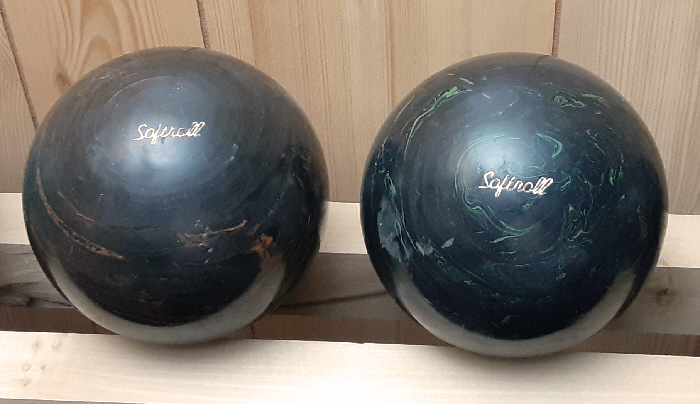
|
First generation Softroll, mostly black with minimal swirling of brown or green in these 2 balls (the cursive handwriting was a trait of the original ball)
|
Second Generation |
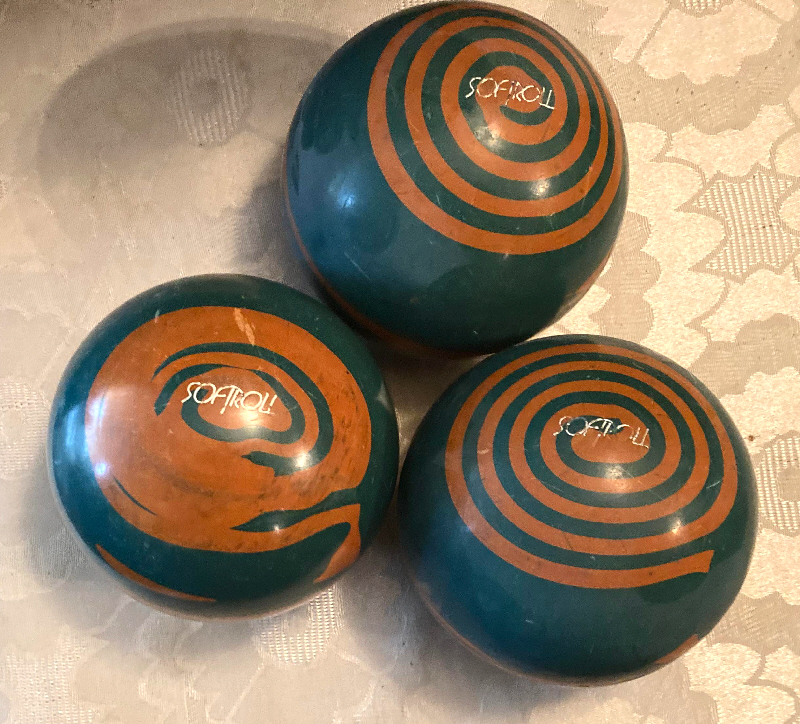
Photo provided by Greg Peteraitis
|
The second generation Softroll was a black (or green) with a brownish-orange motif that was less of a swirl design, and more of a bumble-bee look |
Third Generation |
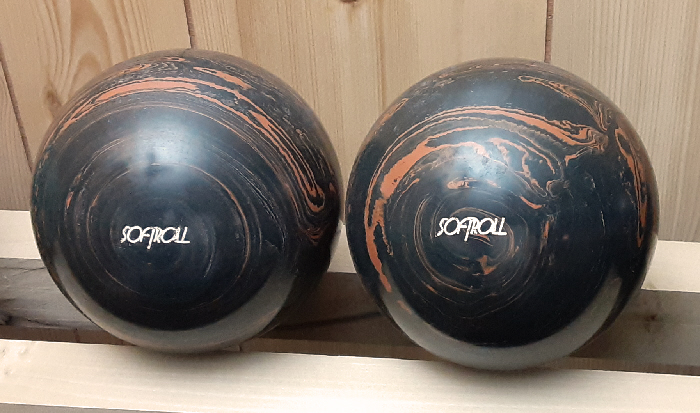
|
Third generation Softroll (the block-italic name emblem was an imprint that stayed with the ball for the years to follow)
|
Fourth Generation |
|
The fourth generation has pretty much maintained as the Softroll of the current day. However, there was a really special pair of Softrolls that I acquired between the 3rd and 4th generations which I felt that Phipps Bowling really "hit the bulls-eye" with. The balls were a pair of light blue and white 'swirl' balls that seemed to be just a tad bit harder in composition, but still retained a very hold-able grip. After developing tendinitis in 2010, I didn't think I'd be returning to bowling and parted with these balls in 2014, providing them to the Argentines during the first IDBC event -- no regrets at all, by the way. The balls shown below, however, do seem to have that extra bit of 'tackiness' about them (with no intent of sounding negative) that provides that extra gripping feature.
|
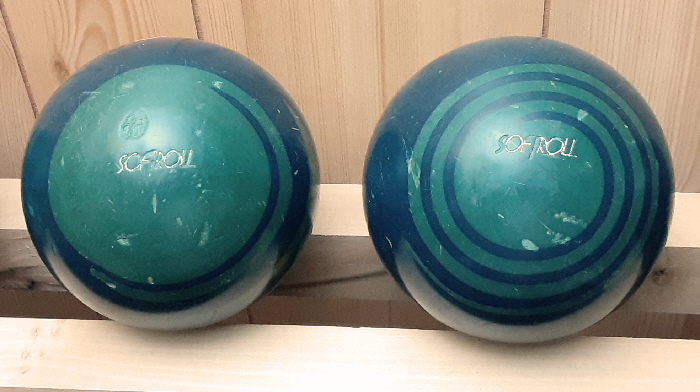
|
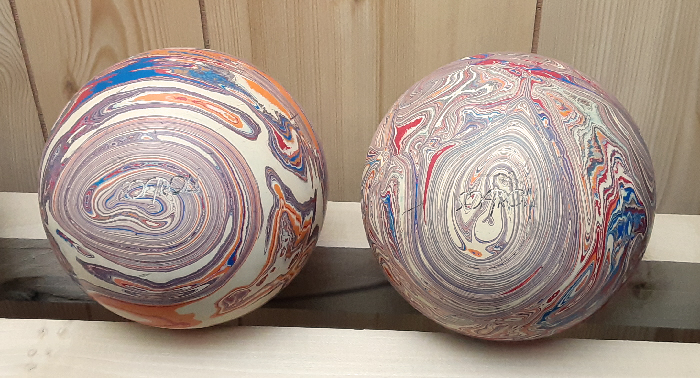
|
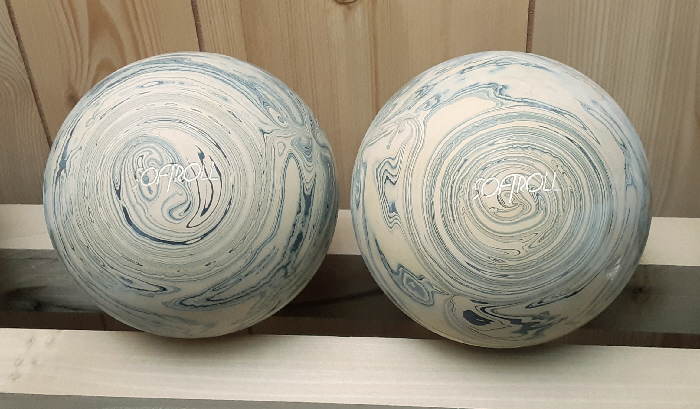
|
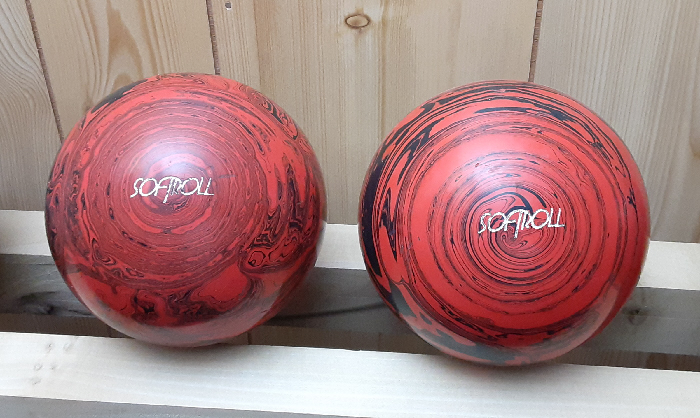
|
Fourth generation Softrolls
|
Something Different |
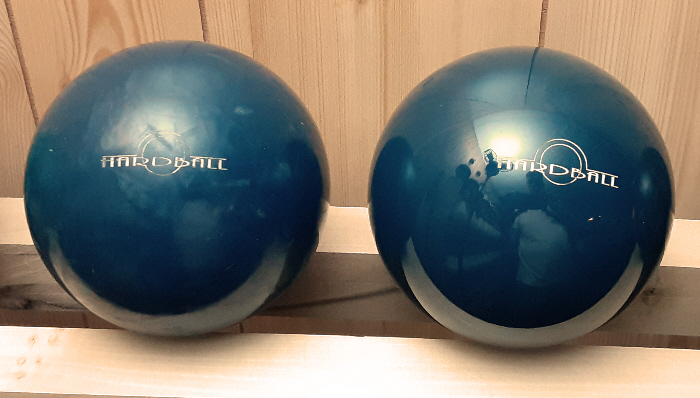
|
Hard Ball (reminiscent of a billiard ball in composition, not much break, and a different feel, obviously)
|








